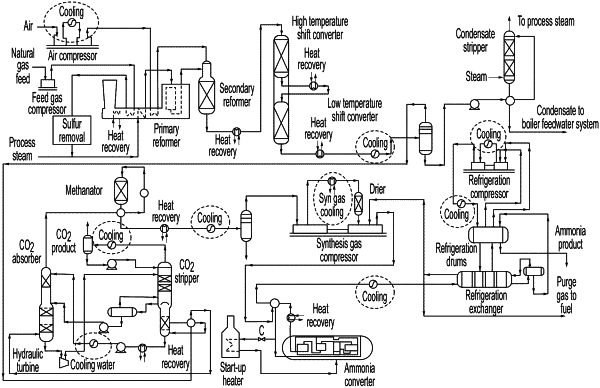| CPC C02F 1/008 (2013.01) [C02F 1/50 (2013.01); C02F 1/66 (2013.01); F28F 27/003 (2013.01); F28G 15/003 (2013.01); G01N 17/008 (2013.01); C02F 2103/023 (2013.01); C02F 2209/02 (2013.01); C02F 2209/40 (2013.01); C02F 2303/08 (2013.01); C02F 2303/20 (2013.01); C02F 2303/22 (2013.01); F28F 2200/00 (2013.01)] | 19 Claims |

|
1. A method of controlling cooling water treatment comprising:
receiving data from a plurality of sensors indicative of at least a temperature of a cooling water stream entering a heat exchanger, a temperature of the cooling water stream exiting the heat exchanger, a temperature of a process stream entering the heat exchanger, and a temperature of the process stream exiting the heat exchanger;
determining a heat transfer efficiency for the heat exchanger based on the received data from the plurality of sensors;
establishing a heat transfer efficiency trend for the heat exchanger over a period of time, wherein establishing the heat transfer efficiency trend comprises fitting a curve having a slope to the heat transfer efficiency determined for the heat exchanger over the period of time;
determining the heat transfer efficiency trend for the heat exchanger over a measurement period occurring after the period of time, wherein determining the heat transfer efficiency trend for the heat exchanger over the measurement period comprises fitting the curve having the slope to the heat transfer efficiency determined for the heat exchanger over the measurement period;
detecting a change in the heat transfer efficiency trend between the period of time and the measurement period by at least determining a change in the slope of the heat transfer efficiency trend over the measurement period to the slope of the heat transfer efficiency trend over the period of time equal to or greater than a threshold amount; and
controlling addition of a chemical additive into the cooling water stream in response to the change detected in the heat transfer efficiency trend for the heat exchanger.
|